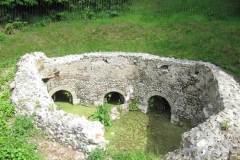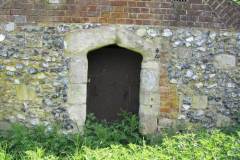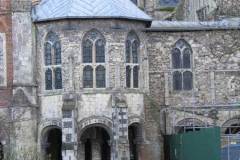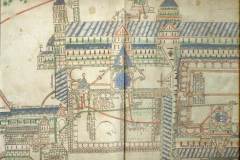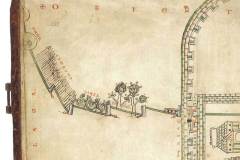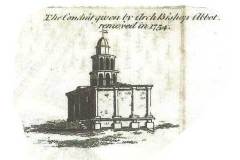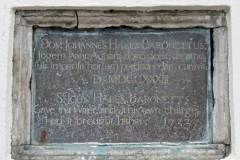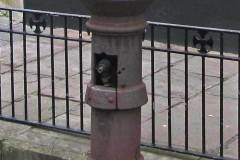From medieval times the city water supply has relied upon springs near St Martin’s church (supplying St Augustine’s) and others near Military Road (supplying Christ Church). Amazingly, both have survived (Images 1 and 2)
The water supply for Christ Church was stored in the surviving water tower (Image 3) A detailed plan of around 1160 showing water usage in the priory for drinking, washing, kitchens and lavatories also survives (Image 4). This remarkable document (reproduced here by kind permission of Trinity College Library Cambridge), gives pictoral descriptions of the fields crossed by the conduit pipe between Military Road and the city walls: wheat, vines and an apple orchaed (Image 5).
Various devices for water storage in the city are mentioned in 18th and 19th century records: a drawing of the conduit tank standing near St Andrew’s church appears on several maps (Image 6), and storage tanks are mentioned at various times in the castle, in St George’s gate, and in the city wall bastion which is now Zoar chapel.
Two water related objects survive near the corner of Monastery Street and Longport. One, a plaque written in English and Latin, records the generosity of Sir John Hales in funding a water supply to the city centre in 1733 (Image 7). The plaque was originally fixed to the conduit near St Andrew’s church, but was removed to the wall of the Guildhall when the conduit was dismantled. Later, at an unknown date, it was moved again to Longport. The second is the nearby water pump (Image 8). This has been described as a converted Crimean cannon, but recent expert advice is that this is not the case.
For more on changes in Victorian times click here.
DL

